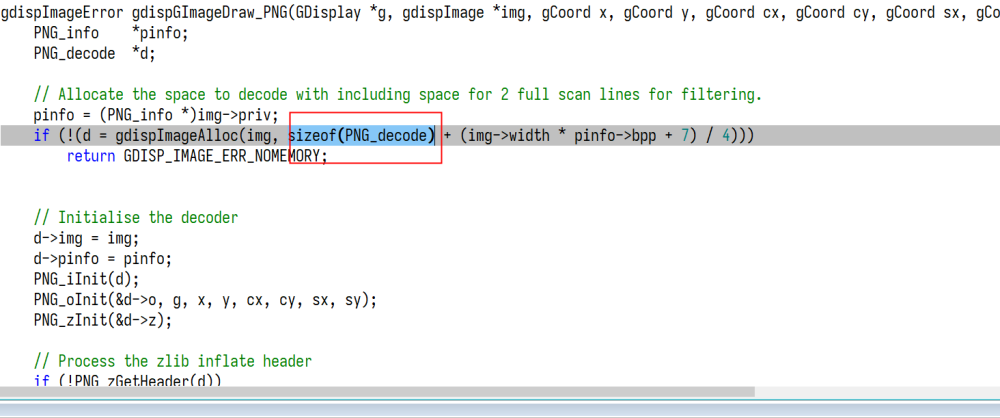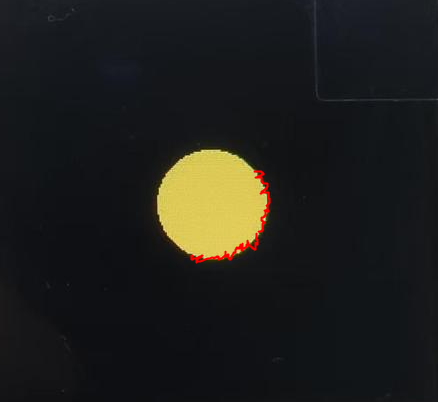All Activity
- Yesterday
-
Nofs joined the community
-
colebuxton joined the community
- Earlier
-
Kroumklak joined the community
-
Interactivv00 joined the community
-
Junior joined the community
-
Cropedly joined the community
-
Tonyaniaeffof joined the community
-
medicalsportsmassage joined the community
-
Invesca001 joined the community
-
doudouneparagoose joined the community
-
Village Kyte changed their profile photo
-
DynaTech Systems changed their profile photo
-
Дуже відчуваю кожну людину, хто втомився через постійного шукання надійних рецептів! Раніше я мала масу закладок на комп’ютері - деякі ресурси для десертів, декілька для м’ясних делікатесів страв, решта під вегетаріанських страв. Часто плутала у цьому безладді! Але коли випадково натрапила на даний ресурс, все моє кулінарне приготування поліпшилося! Тепер мені доступний весь необхідний контент в одному зручному порталі - починаючи з легких ідей на кожен день до особливих рецептів. Особливо обожнюю той момент, як будь-який ресурси перевірені роками та містять чіткі , покрокові вказівки. Навіть не кажучи про те, зараз роблю страви в рази ефективніше - не потрібно витрачати марно години на шукання [url=https://blogreceptov.icu/]Каталог сайтів[/url]
-
Joel Bodenmann started following UGFX on AM64x baremetal
-
Hello & Welcome to the µGFX community! The µGFX library is completely platform agnostic. You should be able to get it to work on AM64x baremetal without any issues. Here's the corresponding documentation for a baremetal target: https://wiki.ugfx.io/index.php/BareMetal
-
Shankar started following UGFX on AM64x baremetal
-
Dear Team, How can i use the UGFX library on AM64x without any OS (baremetal)? Thanks Shankar
-
Joel Bodenmann started following Link to Git repo returns 503
-
Hello & Welcome to the µGFX community! Should be fixed now - Thank you for bringing this to our attention.
-
It seems like the Git repo is down and when trying to clone from https://git.ugfx.io/ugfx/ugfx.git I just get a 503 error. This has been happening for at least 2 weeks now. Is there a new location or is it actually down right now?
-
EE88cog started following Introduction to EE88
-
[p]Experience a uncharted level of excitement with [url=https://719.cn.com/][b]EE88[/b][/url], the ultimate destination in behalf of online gaming enthusiasts. At [url=https://719.cn.com/]https://719.cn.com/[/url], players can scrutinize an great drift of [b]casino[/b] games, titillating [b]x? s?[/b] draws, spry [b]th? thao[/b] betting, and charming [b]trò choi[/b] experiences. From interactive [b]game slots[/b] and vibrant [b]b?n cá[/b] battles to massive [b]jackpot[/b] wins and bitter [b]dá gà[/b] competitions, every before you can say 'jack robinson' promises top-tier entertainment. Fans of [b]esports[/b] and traditional games like [b]tài x?u md5[/b], [b]xóc dia[/b], [b]baccarat[/b], and [b]r?ng h?[/b] will find endless opportunities to agree and win. With liberal [b]khuy?n mãi[/b], limited [b]uu dãi[/b], and a adept [b]cskh[/b] mainstay party, [b]EE88[/b] ensures every actress enjoys a seamless and fruitful experience. Whether you’re a hip colleague or a seasoned [b]d?i lý[/b], [url=https://719.cn.com/][b]EE88[/b][/url] is your trusted platform for the most captivating online pleasure in 2025.[/p]
-
123bNal started following mouseEvent not captured by widget
-
123bEscon started following Why is the resulting circle defective?
-
123bstego started following Draw QR Code
-
Hello & Welcome to the µGFX community! It's pretty much impossible for us to help without more information such as how you integrated the µGFX library and actual build error messages.
-
Primarily my issue is including the library properly and getting it to compile at all. I always get missing includes like "FreeRTOS.h" being undefined or various symbols not existing. So I need help with configuring uGFX as an ESP-IDF component while having it compile.
-
I want to use uGFX as a graphics library for drawing things like lines and rectangles on my ESP32. I have tried to follow everything in this thread: https://community.ugfx.io/topic/4345-ugfx-port-for-esp32-and-esp-idf But no matter what I try, I always get compilation errors about header files not being found or things being undefined. I would appreciate if there was an example project or a wiki somewhere about running this on ESP32 microcontrollers. Thanks!
-
mockers changed their profile photo
-
Or make the circle an image. If you have the flash memory to spare.
-
If you only work with an 18x18 image, PNG is the wrong format to choose. For such as small image, you're better of using something like BMP or even the NATIVE format. PNG does have a minimum overhead of 34k. See the "RAM usage" section in the documentation: https://wiki.ugfx.io/index.php/Images#PNG
-
I want to display an 18*18 png image, but I can't display it, and when I debug, I found that I need to apply 36k heap memory to decode using the png decoder, where sizesizeof(PNG_decode) requires 35k, and my image data only needs 154 bytes of memory. This situation makes my MCU unable to display png images, how can I fix it?
-
Anti-aliasing is something that is currently only supported by font rendering. Circles (or any drawing operation other than fonts) are never anti-aliased. The reason for this is the amount of code and the complexity in the drawing operations make it not suitable for such a small graphics library as uGFX. Anti-aliasing operations are also very slow for most of the displays uGFX support because it requires reading back from the display frame-buffer, an operation that is very slow on many devices. Of-course, if your display is not capable of read-back (and many aren't), anti-aliasing will not work at all, even for fonts. If you want to anti-alias your circle, a would suggest drawing a circle 1 pixel larger diameter in a color that is a blend between the circle color and the background color. Then draw you circle on top of that. That will have the effect of filling in the edge pixels.
-
-
Hi, Can you please provide more details? What do you consider to be defective?
-
Here's my code: gdispGFillCircle(g, 120, 120, 30, HTML2COLOR(0xFF8D1A)); And Anti-aliasing is turned on. #define GDISP_NEED_ANTIALIAS GFXON
-
The problem with adding the attribute tag is that it is a compiler specific solution. This means that adding the attribute actually breaks the code for other compilers. The solution of course is to make a compiler specific macro that defines it as the attribute where possible and defines it as blank otherwise. There are lots of optimiser style bugs that exist and each compiler, and every optimisation level, is different. GCC is particularly bad, or atleast it was a few years ago when I was playing with this stuff. It is often hard to find bugs that are not source bugs but rather optimiser bugs. In summary, well done on finding this, and especially in finding a solution. When Joel or I find a moment we will add a suitable "no-inline" macro to these calls.
-
Using the Makefile approach is very simple as the Makefile that ships with µGFX exposes variables for sources, include paths and libraries to link. See the corresponding documentation. Does your existing CubeIDE project already use Makefile? If so, follow the makefile documentation linked above. There's also an example for ChibiOS (not specific to CubeIDE but it shows how simple it is to add µGFX to an existing Makefile project). If your existing CubeIDE project uses CMake instead, the current master branch of the official µGFX repository (i.e. µGFX v2.10) supports CMake too. If you need more hands-on support, we can provide commercial support.
-
Hi, we are using version 2.9 of the uGFX library compiled with single file inclusion in STM32's CubeIDE. We would like to use Pixelmap. As stated in the wiki, the inclusion of this library does not work in ‘single file inclusion’ which is the mode we have been using. Is there a clear procedure explaining how to use the Makefile with our IDE, or is there an uGFX update available that solves this problem? Alternatively, I would like to ask if there is a method to implement the use of a virtual frame buffer, as I understand that the Pixelmap serves to this purpose. Thank you
-
Excellent! Отлично!
-
Awesome - Thanks! This has now been merged into the master branch: https://git.ugfx.io/uGFX/ugfx/commit/02cbcea9e5b882f35b33f079340925a511b78acb Will do a v2.10 release this week.
-
Hi, Joel! I tested the patch for more than a day on two devices. Everything works stably as expected and there were no problems.
-

Screen not rendering properly - stmH7 + ChibiOS + LTDC
Joel Bodenmann replied to dynfer's topic in Support
µGFX supports file formats like BMP, GIF and PNG out of the box. You can directly load the encoded image. No need to use an image converter. You can use the NATIVE format but then you'll indeed have to do the conversion yourself. The easiest way to get an image is to include it in your firmware image. This can be done with the file2c utility that ships with the µGFX library. You can then use ROMF to display it. Have a look at the /demos/modules/gdisp/images demo to get started. Also, here's more documentation: https://wiki.ugfx.io/index.php/Images For the future, please make a separate forum topic/thread. This makes it much easier for other people to find answers to similar questions in the future

.thumb.jpeg.cbb9a814e8d303262fb56c06aa30cf8a.jpeg)

.thumb.png.768a2c7dd500376eee86906cba6b8b85.png)
.thumb.png.626da1c6f3df299a9f5f3816f47d083a.png)
.thumb.jpg.42de8749b800ca3d3fc7575a4b37469d.jpg)





